Remember when toys came with a healthy dose of danger and a side of potential injury? The 1960s were a magical time when childhood meant skinned knees, Band-Aids, and toys that would send modern safety inspectors into cardiac arrest. Back then, we didn’t need warning labels to tell us that throwing a lawn dart might not be the brightest idea – we learned through trial and error, and somehow most of us lived to tell the tale.
1. Lawn Darts (Jarts)
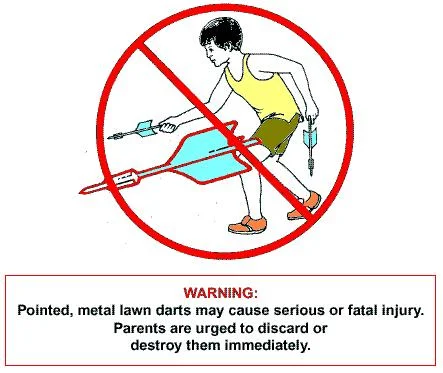
Nothing says “family fun” quite like hurling heavy, pointed projectiles across the backyard while your siblings run for cover. These weighted darts with sharp metal tips were marketed as the perfect game for picnics and barbecues, because apparently someone thought combining children, competition, and medieval weaponry was a brilliant idea. The goal was simple: toss these spear-like toys toward plastic rings on the ground and hope nobody wandered into the landing zone.
Looking back, it’s amazing that lawn darts stayed on the market as long as they did, racking up thousands of emergency room visits before finally being banned in 1988. We’d spend entire summer afternoons playing with what were essentially javelins disguised as toys, and our parents would watch from lawn chairs with their cocktails, blissfully unaware they were hosting their own version of gladiator games. The fact that we considered a game successful if nobody needed stitches really puts our childhood priorities into perspective.
2. Clackers (Click-Clacks)

Two heavy acrylic balls connected by string – what could possibly go wrong? Clackers were the fidget spinners of the ’60s, except instead of quietly spinning in your palm, they created a thunderous racket that could be heard three houses away. The idea was to swing them up and down so the balls would “clack” together above and below your hand, creating a rhythm that was oddly hypnotic and incredibly annoying to anyone within earshot.
The problem was that these acrylic balls had a nasty habit of shattering into sharp fragments, sending shrapnel flying in all directions like tiny grenades. We’d play with them until our wrists ached, completely oblivious to the fact that we were essentially juggling potential eye hazards. When pieces of plastic started embedding themselves in bedroom walls and foreheads, parents finally caught on that maybe, just maybe, exploding toys weren’t the best idea for indoor entertainment.
3. Chemistry Sets with Real Chemicals
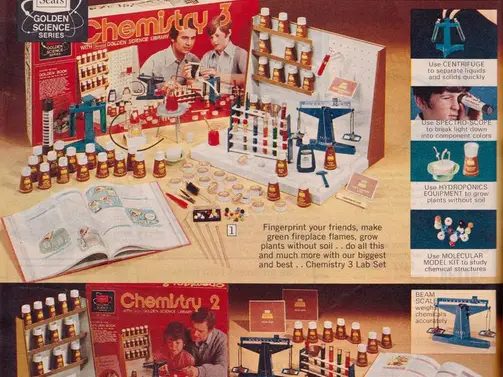
Remember when chemistry sets came with actual uranium and enough dangerous substances to level a city block? The Gilbert U-238 Atomic Energy Lab wasn’t just a toy – it was a miniature nuclear facility that parents somehow thought was appropriate for little Tommy’s eighth birthday. These sets included real radioactive materials, Geiger counters, and enough chemical compounds to make a modern hazmat team break out in a cold sweat.
We’d spend hours mixing unknown substances in our bedrooms, creating smoke, strange smells, and occasional small explosions that our parents dismissed as “learning experiences.” The instruction manuals read like bomb-making guides, cheerfully explaining how to extract radium and conduct experiments that would now require federal clearance. It’s a miracle that an entire generation of amateur chemists didn’t accidentally discover how to split atoms in their basement laboratories.
4. Cap Guns with Real Gunpowder
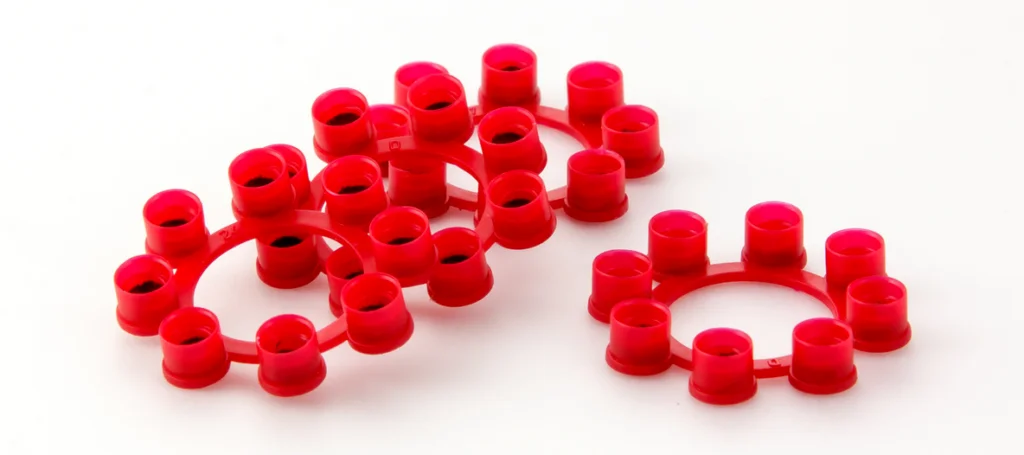
Cap guns in the ’60s didn’t mess around with wimpy “pop” sounds – they packed real black powder that created genuine explosions, complete with smoke, sparks, and a sulfur smell that lingered for hours. These weren’t the plastic toy guns of today; they were often made of die-cast metal and looked realistic enough to cause genuine panic in public spaces. The caps themselves contained actual gunpowder, which we quickly learned could be extracted and used for all sorts of creative mischief.
Kids would spend their allowance money on rolls of caps, then promptly figure out ways to set off entire rolls at once, creating explosions that rattled windows and sent pets diving for cover. We’d hammer caps on sidewalks, creating mini fireworks shows that left our fingers blackened and our ears ringing. The fact that we were essentially playing with tiny bombs never occurred to us – we were too busy enjoying the authentic blast effects and pretending we were frontier sheriffs.
5. Metal Swing Sets
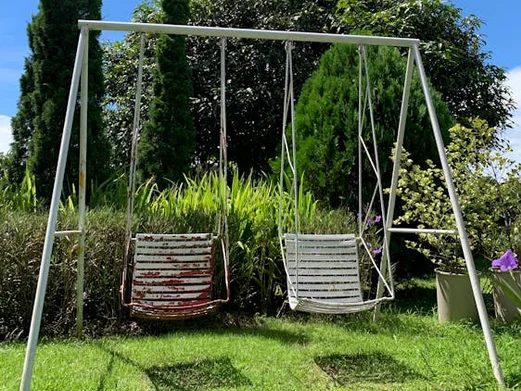
Those towering metal jungle gyms weren’t just playground equipment – they were elaborate torture devices disguised as fun. The metal bars would become scorching hot in summer sun, capable of branding young skin faster than you could say “third-degree burn.” In winter, they’d turn into slippery ice sculptures that sent kids sliding off in unexpected directions, usually headfirst into the frozen ground below.
The swing sets had no safety features whatsoever – no rounded edges, no protective coatings, and certainly no concern for what happened when a kid inevitably lost their grip at the peak of their swing. We’d launch ourselves from these contraptions like human cannonballs, landing in heaps on the hard-packed dirt below with nothing but our own reflexes to break the fall. The monkey bars were essentially an endurance test to see who could hang on longest before their sweaty palms gave out and sent them plummeting to earth.
6. Easy-Bake Oven
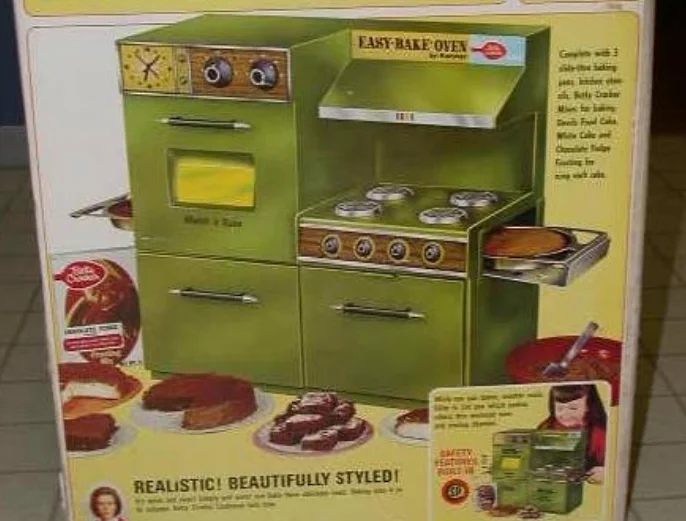
The Easy-Bake Oven was every little chef’s dream and every parent’s nightmare, powered by a genuine 100-watt light bulb that could reach temperatures hot enough to cause serious burns. Unlike today’s versions with safety features and automatic shut-offs, these ovens were basically miniature furnaces with a slot just big enough for small fingers to accidentally wander into. The metal surfaces would become scorching hot, and there was no warning system beyond your own pain receptors.
We’d spend hours “cooking” tiny cakes and cookies, frequently burning ourselves on the heating element or the metal surfaces that retained heat long after the oven was turned off. The instruction manual casually mentioned the possibility of burns as if it were just another ingredient in the recipe for fun. Parents would watch nervously as we operated our personal kitchen inferno, probably wondering if homeowner’s insurance covered Easy-Bake related incidents.
7. Creepy Crawlers Thingmaker
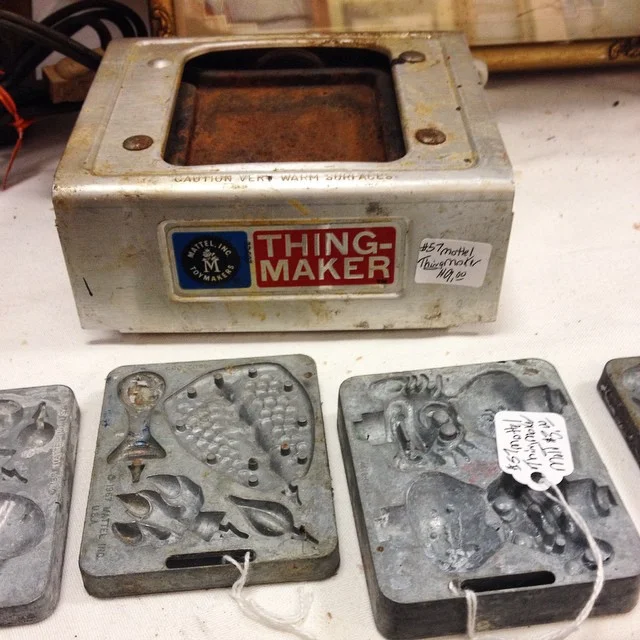
The Thingmaker was like having a miniature factory in your bedroom, complete with a heating element that reached temperatures capable of melting metal and plastic molds that could brand your skin faster than a cattle iron. This toy used “Plastigoop” – a substance that smelled suspiciously toxic and probably contained enough chemicals to preserve a small mammal. The heating plate had no safety guards, temperature controls, or anything resembling concern for human welfare.
Kids would gleefully pour mysterious colored goop into molds, then wait for the volcanic heating element to work its magic, often forgetting that everything involved was hot enough to cause serious injury. We’d burn our fingers on the molds, inhale questionable fumes from the melting plastic, and somehow convince ourselves this was the height of creative expression. The fact that we were essentially operating a small foundry in our bedrooms never struck anyone as problematic until the inevitable emergency room visit.
8. Slip ‘N Slide
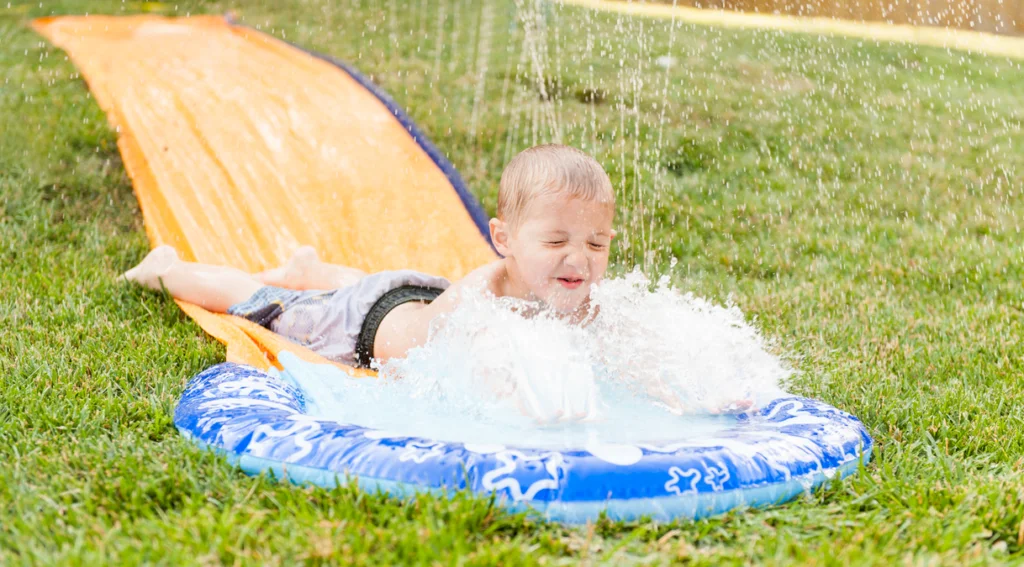
The original Slip ‘N Slide was basically a recipe for disaster disguised as backyard fun – a long sheet of yellow plastic, a garden hose, and absolutely no padding between you and the ground beneath. The concept was simple: run at full speed, dive onto the wet plastic, and slide across your lawn like a human torpedo, hopefully avoiding rocks, sprinkler heads, and the inevitable abrupt stop at the end. The plastic was thin enough that every pebble, stick, and ant hill became a potential injury hazard.
We’d spend entire summer days perfecting our sliding technique, collecting grass stains, scrapes, and bruises like badges of honor. The Slip ‘N Slide had no side barriers, so half the fun was seeing who would shoot off the sides and crash into mom’s flower bed or the neighbor’s fence. By the end of the day, the “slide” would be more like a muddy obstacle course, and we’d all look like we’d been dragged behind a pickup truck – but hey, we were having fun!
9. Pogo Sticks
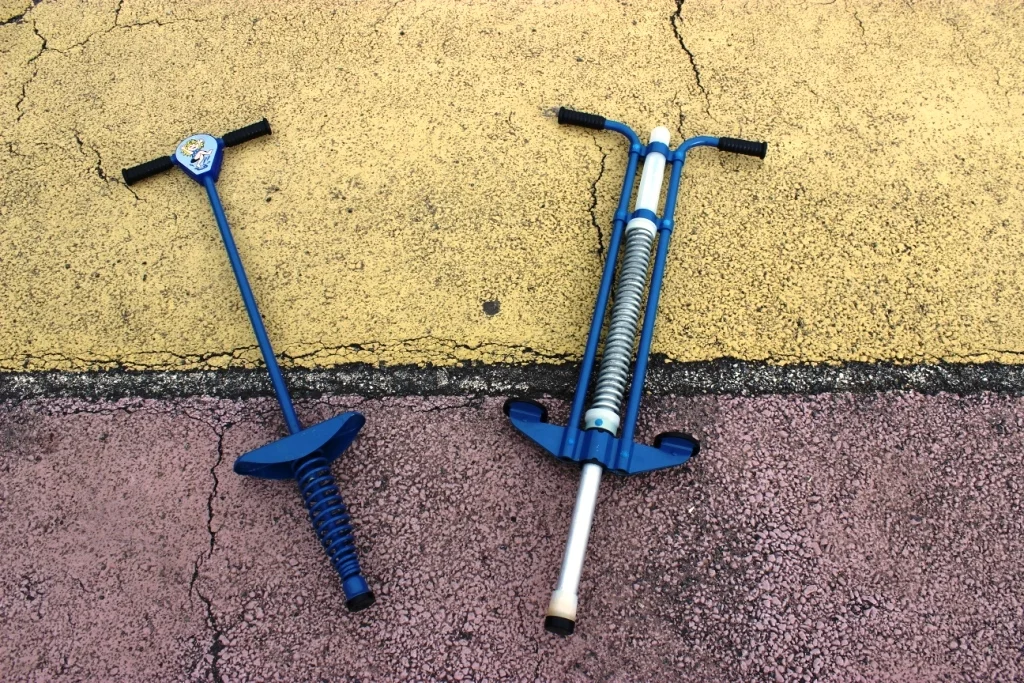
Pogo sticks in the ’60s were metal instruments of mayhem with absolutely no safety features beyond your own sense of balance and self-preservation. These spring-loaded contraptions had small metal platforms for your feet, handles that could easily slip from sweaty palms, and a tendency to launch riders in completely unexpected directions. The spring mechanism was powerful enough to send kids bouncing several feet in the air, with nothing but gravity and luck determining where they’d land.
We’d compete to see who could bounce the highest, the longest, or the most times without falling, treating these devices like medieval torture instruments designed for entertainment. The metal handles would slip from our grip mid-bounce, sending the pogo stick flying in one direction while we sailed off in another, usually toward the nearest tree or parked car. Scraped knees and twisted ankles were considered part of the pogo stick experience, and we’d bounce right back on as soon as the stars stopped circling our heads.
10. Metal Tonka Trucks
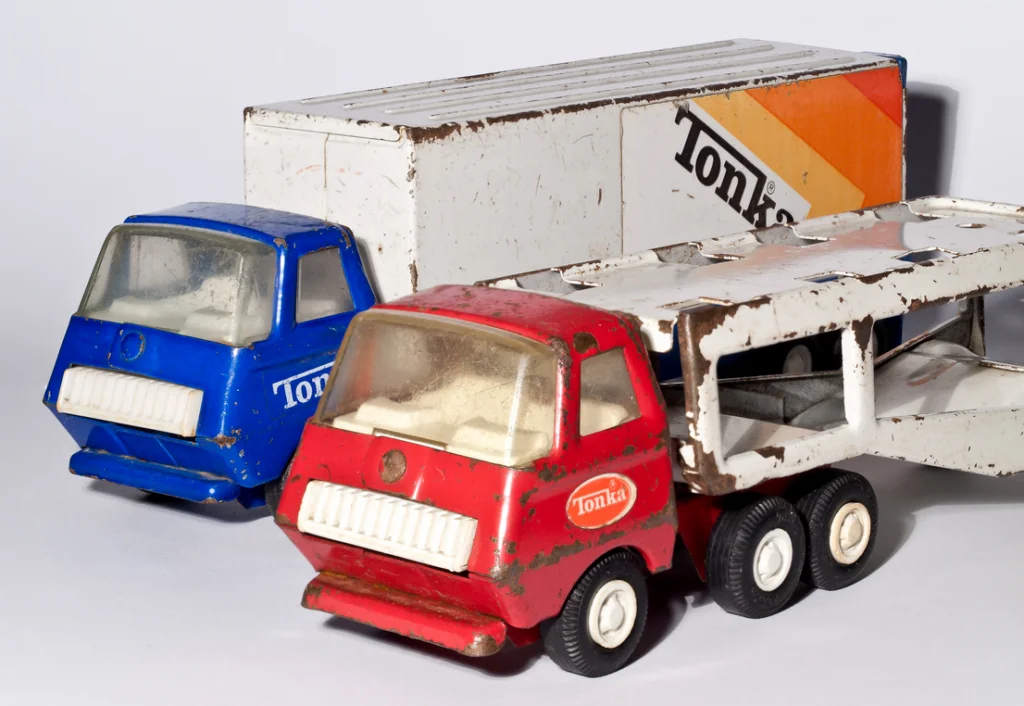
Those indestructible yellow Tonka trucks weren’t just toys – they were miniature bulldozers capable of causing serious damage to both property and small children. Made from heavy-gauge steel with sharp edges and no rounded corners, these trucks could dent walls, break windows, and leave impressive bruises on anyone who got in their way. The metal was thick enough to stop a bullet, and the weight was sufficient to use them as makeshift hammers for various destructive projects.
We’d use these trucks for everything from sandbox construction to indoor demolition, treating them like the industrial equipment they essentially were. Brothers would “accidentally” run over each other’s feet with loaded dump trucks, creating injuries that would make a construction worker wince. The fact that we were playing with what amounted to scale models of heavy machinery never occurred to anyone – we just knew they made satisfying crashes when launched down stairs or thrown at bedroom walls.
11. Super Ball
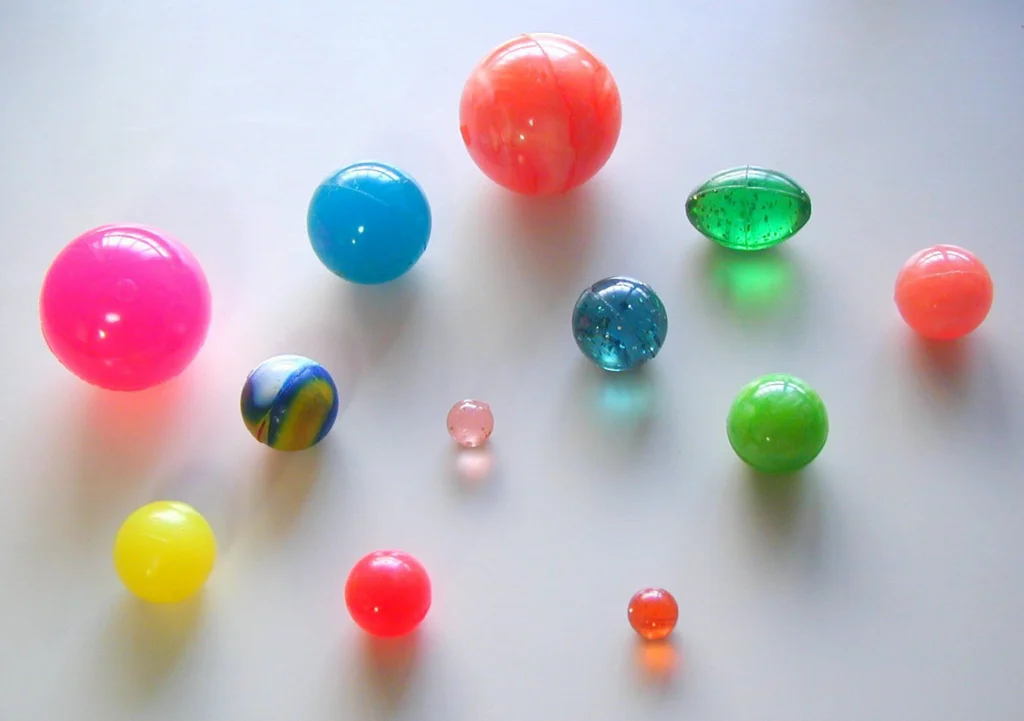
The original Super Ball wasn’t just bouncy – it was a rubber sphere of chaos that could ricochet off walls, ceilings, and windows with enough force to cause genuine injury or property damage. Made from a synthetic rubber compound called Zectron, these balls could bounce to 92% of their original height, creating unpredictable trajectories that turned any room into a pinball machine with you as the unfortunate bumper. The bounce was so powerful and erratic that you literally never knew which direction the ball would fly next.
We’d throw these things as hard as we could in basements and bedrooms, watching them carom off surfaces like rubber bullets, breaking lamps, knocking over drinks, and occasionally catching someone in the face at high velocity. The Super Ball’s unpredictable bounce made it impossible to catch safely, and more than one kid learned the hard way that rubber moving at high speed can pack quite a punch. Parents would confiscate these bouncing menaces after the inevitable broken window or black eye, but we’d always manage to get our hands on another one to continue our indoor demolition projects.
12. Spudgun
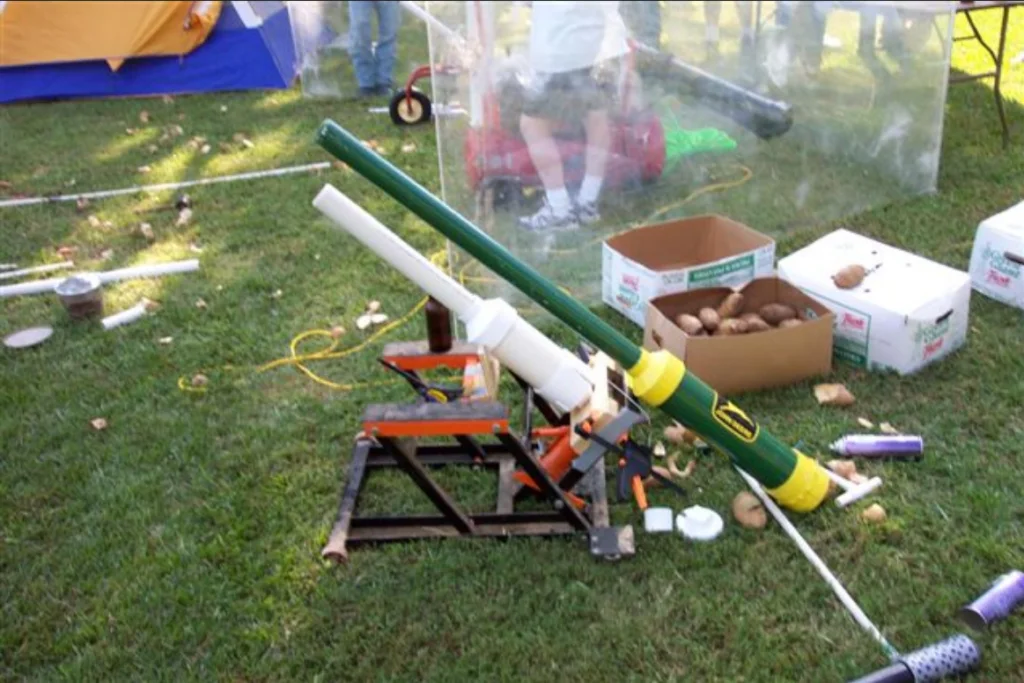
The Spudgun was exactly what it sounds like – a legitimate potato-launching cannon that could fire vegetables with enough force to knock someone unconscious or break windows from impressive distances. This wasn’t a gentle toy that lobbed foam balls; it was a genuine siege weapon powered by compressed air and capable of turning ordinary potatoes into high-velocity projectiles. The range and accuracy were surprisingly good, making it possible to hit targets several houses away.
We’d set up elaborate battles in the backyard, using everything from potatoes to tennis balls as ammunition, creating what amounted to vegetable warfare in suburban neighborhoods. The gun had enough power to leave welts, break glass, and send pets running for cover, but somehow parents thought this was perfectly acceptable entertainment. Looking back, it’s amazing that the great Spudgun wars of the ’60s didn’t result in more emergency room visits or property damage claims.
Those were the days when childhood meant a little danger, a lot of adventure, and parents who trusted us to figure out the difference between fun and disaster – usually after we’d already crossed that line a few times. We survived lawn darts, exploding chemistry sets, and metal playground equipment that could double as medieval torture devices, and somehow most of us lived to tell the tale. Maybe we were tougher back then, or maybe we were just too busy having fun to worry about all the ways our toys were trying to injure us.
This story How These 12 Toys from the ’60s Would Fail Safety Tests Today was first published on Takes Me Back.


